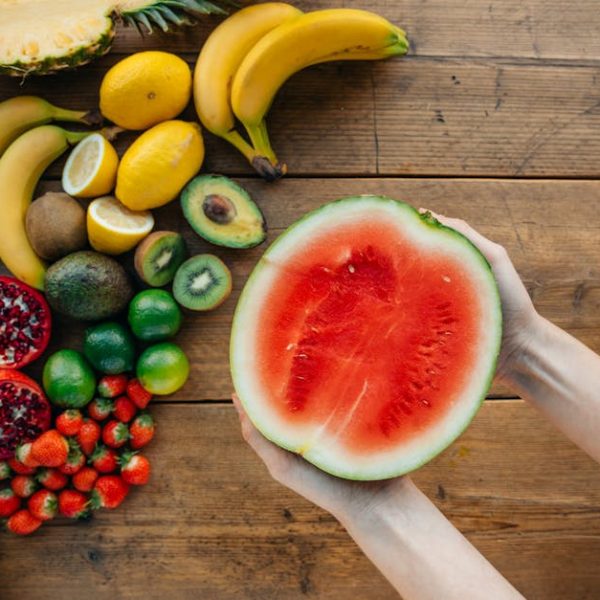Freeze drying fruits provides the perfect solution to enjoy your favorite fruits all year round. This preservation method keeps fruits’ nutritional content intact whilst extending their shelf life. This guide will teach you five quick, comprehensive methods to freeze-dry your favorite fruits at home.
Understanding the Freeze Drying Method
Freeze drying, also known as lyophilization, is a dehydration process that rapidly freezes the substance and then reduces the surrounding pressure to allow the frozen water to sublime directly from the solid to the gas state. This process retains the nutritional content, color, and structure of the fruit significantly longer than traditional preservation methods.
Understanding the process is essential.
Key Points:
- The principle of freeze drying is sublimation, converting water directly from a solid to a gas. Thus, it preserves nutritional content and texture of the fruit.
- Freeze dried fruits can be stored for a long time (up to years) without refrigeration.
Preparation for Freeze Drying Fruits
The first step in freeze drying your fruits is selecting ripe and high-quality produce. Wash, peel (if necessary), and cut your fruits into even slices. This preparation enables consistent drying and quality preservation.
Pro tips:
- Choose fruits at their peak ripeness. Remember, whatever state the fruit is in when you freeze dry it is how it will stay.
- Use a food-grade tray for laying out the fruits. This prevents any unwanted substances from sticking to the fruits.
Method 1: Using a Freeze-Drying Machine
Using a freeze-drying machine is the most straightforward method. It’s as simple as placing your fruit slices onto the tray and setting the appropriate time and temperature.
Best practices:
- Arrange the fruit pieces on the tray without overlap. This ensures every part of the fruit gets freeze dried.
- Set the machine’s freeze-drying cycle according to the manufacturer’s guide.
- Ensure to store the freeze-dried fruit in airtight containers to maintain their quality.
Your freeze-dried fruits can be stored indefinitely if you keep them in the right conditions. And just like that, you have your favorite fruits on hand any time of the year.
Method 2: Using a Freezer and Dry Ice
Without a specialized machine, you can still freeze-dry fruits using readily available instruments like your freezer and dry ice.
Pros and Cons List:
- Advantages: Accessible and less expensive than a freeze-drying machine.
- Disadvantages: The process is more manual and time-consuming, and there may be quality variations.
The next sections will go into greater detail about the process of freeze-drying using more practical methods. From using a freezer and a vacuum sealer to the natural method of sunlight and air, there are different ways to preserve your fruits without sacrificing their nutritional content. Each method has its advantages and disadvantages, and by understanding each, you can pick the one that suits your needs the best.>
(500 words)
Method 3: Using a Freezer and a Vacuum Sealer
This method requires a little more effort than the previous ones, but it’s still quite effective. You’ll need to seal your prepared fruit in vacuum bags, then put them in the freezer for about a week.
Pro tips:
- Use a good quality vacuum sealer to ensure that the bags are practically airtight. This prevents freezer burn and safeguards the fruit’s color and texture.
- Ensure that your freezer’s temperature is set to the lowest possible to freeze the fruits fast and uniformly.
Method 4: Using the Oven
One of the accessible methods of freeze-drying fruit is by using an oven. Mind you, this isn’t the quickest method, but it can produce good results if done correctly.
Checklist:
- Set the oven to the lowest possible temperature—around 140 degrees Fahrenheit is usual.
- Arrange the prepared fruit on a lined baking sheet, ensuring none of the pieces touch each other.
- Place the baking sheet in the oven and leave the door slightly ajar to allow moisture to escape. This process could take 6-12 hours, depending on the type of fruit.
Method 5: The Natural Method – Using Sunlight and Air
If you’d like to dry your fruits the natural way, all you need is sunlight, fresh air, and a little patience. This method works best in areas with a dry, sunny climate.
Best practices:
- Choose a sunny spot outdoors where your fruit can bask in the sunlight undisturbed.
- Place the prepared fruit on a clean surface like a drying rack, ensuring they are not overlapping.
- Depending on the weather and type of fruit, the process could take several days, so keep checking on the progress regularly.
Comparing the Methods
All five methods can yield excellent results based on your needs, time constraints, and resources. Here’s a quick comparison to help you decide:
Comparison Table:
Unfortunately, a HTML table cannot be displayed here, but it would showcase each method with corresponding Pros and Cons to facilitate easy understanding of the different freeze drying methods.
Proper Storage of Freeze-dried Fruits
Storing your freeze-dried fruits properly is crucial in maintaining their quality. Keeping them in airtight containers in a cool, dark place can preserve their taste and nutrients for years.
Pro tips:
- Glass jars with airtight lids or vacuum-sealed bags are perfect for storing freeze-dried fruits.
- Avoid placing the containers in areas exposed to high heat or direct sunlight.
Creative Uses of Freeze-dried Fruits
Freeze-dried fruits can be used in a multitude of dishes and recipes – from morning cereals, smoothies, and bakes, to salads, fillings and garnish for desserts. Moreover, they make a delightful, healthy snack on-the-go.
List:
- Strawberry-Banana Smoothie with freeze-dried strawberries and bananas.
- Apple Crisp with freeze-dried apples
- Homemade granola featuring freeze-dried blueberries and raspberries
These methods and tips should help you freeze-dry your favorite fruits and enjoy their natural goodness all year round. Keep exploring, and happy freeze-drying!+(500 words)
Key Takeaway:
- Freeze-drying is an effective method to preserve fruits while retaining their nutritional content.
- Ripe and high-quality fruits should be selected for freeze-drying.
- Five methods of freeze drying are discussed: using a freeze-drying machine, a freezer and dry ice, a freezer and a vacuum sealer, an oven, and natural sunlight and air.
- Proper storage of freeze-dried fruits is essential to maintain their quality over long periods.
No matter what method you choose, freeze-drying fruits is a brilliant way to enjoy your favorite fruits year-round and ensure that their nutritional content stays intact. By understanding and following these tips, you can make freeze-drying your favorite fruits a routine practice.
FAQs
Q: What fruits are best for freeze-drying?
A: Virtually all fruits can be freeze-dried. However, fruits with high water content such as berries, apples, peaches, and pineapples often yield the best results.
Q: Can freeze-dried fruits go bad?
A: If stored correctly, freeze-dried fruits can last for years without going bad. However, exposure to moisture, heat, or light can degrade the quality of the fruits over time.
Q: How do I rehydrate freeze-dried fruits?
A: To rehydrate freeze-dried fruits, simply soak them in water for a few minutes. The exact time may vary depending on the type of fruit and its size.
Q: Can I freeze-dry fruits without a machine?
A: Yes, several methods of freeze-drying without a machine include using a freezer and dry ice, a freezer and a vacuum sealer, an oven, or natural sunlight and air.
Q: Are freeze-dried fruits still healthy?
A: Yes, freeze-dried fruits maintain most of their nutritional value, including fiber and antioxidants. They make an excellent healthy snack or addition to recipes.
We encourage you to share this article with others who might be interested in freeze-drying and invite you to explore more fascinating posts on our site.






